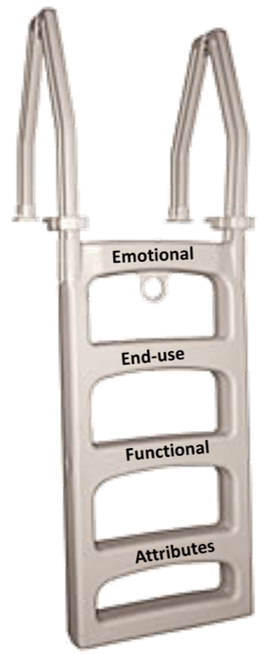The 5 Whys and Their Use in Marketing and Sales - A Case Study
During a recent lunch with a new acquaintance who owns an organizational performance and coaching business, I took the shameless opportunity to describe and plug Case Swarm. Case Swarm is an online wisdom platform; it enables collaborative (or crowd-sourced) problem solving. Ironically, the problem-solving mode of this platform was an afterthought; the original intent of Case Swarm was (is!) to help individuals and teams, in the aftermath of formal learning (e.g., a training workshop), translate the facts and figures learned to scenario problems (“case studies”). As I cryptically tell others, “Case Swarm drives learning deep”; it serves as a great follow-up to learning, extending the formal experience and conditioning the way to information use.
In explaining Case Swarm, I realized that I didn’t have an elevator speech down pat. My lunch companion helped me realize that quickly. Part of my verbal fumbling, of course, is being too close to the tool, part of it is hope that sheer enthusiasm for it will win over others, and part of it is that the tool does a few different things, and so I find myself constantly trying to figure out which element will appeal most to the poor recipient of my Case Swarm verbal blitz.
Something interesting was drawn to my attention by this lunch partner. She suggested in order to smooth my story, I really should explore the use of the 5 Whys.
Confession – my interests are varied, and through various associations, I have learned a bit about the six sigma process improvement methodology. I’ve even read a brilliant book on six sigma in marketing and sales! So I was certainly aware of root cause analysis, which is a part of the six sigma toolkit that invites exploration of problems and challenges through the asking of at least five “why?” questions. Strangely, however, I had not actually heard of it being applied to marketing challenges.
I have now read up on the 5 Whys. There actually isn’t a massive amount of information out there about its application to marketing and sales challenges, and what is out there seems tentative, uncertain about how to formulate the deeper whys. However, during my study, what came to mind was the concept of the “benefits ladder”, something I have used a fair bit over my years in marketing.
 By my definition, a benefits ladder moves from low level benefits about a product or a solution – benefits inherently associated with the attributes of an offering – to expressions of functional benefits, end-use benefits and finally, at the top of the ladder, the emotional benefits (see image). From my experience, you often find, as you roll up from lower level benefits to higher level benefits (and there is often a one-to-one correspondence between each lower level benefit and an expressed benefit on the next ladder rung), that emotional benefits draw from a pretty small pool of possibilities (i.e., peace of mind; gratification; actualization; enthusiasm; energy; commitment).
By my definition, a benefits ladder moves from low level benefits about a product or a solution – benefits inherently associated with the attributes of an offering – to expressions of functional benefits, end-use benefits and finally, at the top of the ladder, the emotional benefits (see image). From my experience, you often find, as you roll up from lower level benefits to higher level benefits (and there is often a one-to-one correspondence between each lower level benefit and an expressed benefit on the next ladder rung), that emotional benefits draw from a pretty small pool of possibilities (i.e., peace of mind; gratification; actualization; enthusiasm; energy; commitment).
So – drawing the pieces together – the approach of asking 5 Whys when tackling the marketing or sales of a product or solution seems to be a methodology to support the creation of a benefits ladder.
I decided, to support this post’s approach, to show you my 5 Whys for one aspect of Case Swarm. While it isn’t shown, I am hoping you can pretty easily see how I could fill out a benefits ladder with the information stemming from this analysis.
As importantly, I’d love for a sanity check on my 5 Whys for Case Swarm. Anyone see other approaches or key elements that I appear to be missing, given the focus on its organizational problem-solving toolset?
Why is Case Swarm valuable?
Through Case Swarm, organizational challenges and issues can be resolved leveraging the problem-solving power and collaboration of many members of a work team.
Why is leveraging the problem-solving power and collaboration of a work team important?
Organizational challenges are too often left to the improvisation of one or a very few individuals who may not have either enough information or any reference experience(s) to address the problem effectively. Case Swarm celebrates the build-up of best ideas for troubleshooting.
Why does this matter?
Organizational challenges improperly handled lead to employee frustration and client disloyalty.
Why does this matter?
Employee frustration leads to compromised decision-making and employee turnover. Client disloyalty leads to loss of revenue, and more effort finding new customers to replace the revenue.
Why is this important?
Compromised decision-making leads to poor decisions about customer relations that leads to customer abandonment. Finding new customers, instead of keeping existing ones, is a labour-intensive process that harms organizational bottom lines.
Why is this important?
Profitable organizational bottom lines keep people employed, shareholders satisfied, and create full potential for corporations to make their mark on society.


